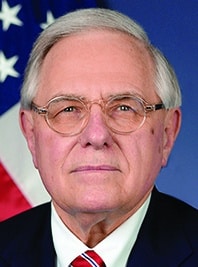The recent news of Ron Batory’s nomination for the Amtrak Board of Directors has sparked a lot of discussion on social media. Unfortunately, much has been based on misinformation.
The SMART Transportation Division wants to provide some clarity on this topic for our members and everyone at Amtrak or any other railroad.
Amtrak’s board structure
First, it’s important to understand the rules and regulations surrounding the makeup of the Amtrak board. The board has 10 members, with eight of these suggested by both political parties. The other two are the Amtrak CEO and the Secretary of Transportation.
49 U.S. Code § 24302 governs the composition of Amtrak’s board. The Speaker of the House of Representatives (currently a Republican), the minority leader of the House of Representatives (a Democrat), the majority leader of the Senate (a Democrat) and the minority leader of the Senate (a Republican) ALL provide input about who to consider. There are also geographical considerations. The U.S. president then “appoints” the people selected by this group for the Senate to consider.

Batory was recommended for nomination by Senate Minority Leader Mitch McConnell. Batory was not chosen by President Joe Biden or his administration, despite how some media outlets and social media discussions have framed it.
Much of the uproar assumes Batory’s seat on the Amtrak board is a done deal. It is not. Once appointed, a Senate committee considers prospective Amtrak board members, who are then approved or rejected by the full U.S. Senate.
A history lesson
Biden’s choice for FRA administrator was Amit Bose, who has spent his three years in this post undoing the Precision Scheduled Railroading (PSR) mess he inherited from Batory, who previously led the FRA. The record speaks for itself, as Bose has worked well with SMART-TD and other rail unions to push back against unsafe and inhumane railroad practices.
Unneeded bluster by keyboard warriors
It’s understandable that some people may be confused or alarmed to see Batory listed as a Biden appointee in press materials and in headlines. The president plays a ceremonial role in transmitting the nominations made by the committee to Congress, as depicted in White House communications. Claiming that the president selected the nominees is a smokescreen designed to outrage people and obscure the truth prior to November.
Batory’s nomination to the Amtrak Board of Directors is not a reflection of the Biden administration’s values or priorities. It’s a partisan political decision set forth by the Senate minority leader. The law ensures that both parties have a meaningful way to decide the makeup of the Amtrak Board.
It is important that American railroad workers understand this reality instead of listening to knee-jerk provocations made by those using surface-level observations of the process.

